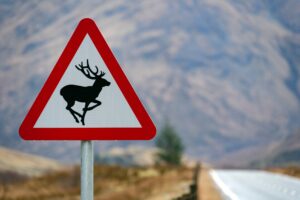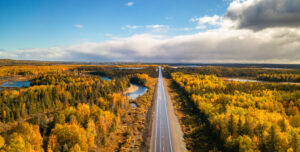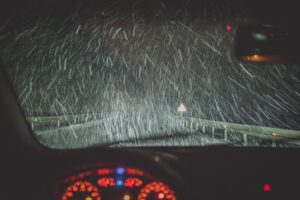Why November Is Peak Deer Collision Season
November might bring cozy sweaters and pumpkin spice, but it also brings something far less pleasant: deer season. And we’re not just talking about hunting.
For drivers, November marks peak deer collision season, when these unpredictable animals are most active and most dangerous on the road.
The numbers don’t lie: over 1.5 million deer-vehicle collisions happen every year in the United States, with November accounting for a disproportionate share. The result? Billions in vehicle damage, thousands of injuries, and insurance claims that can leave drivers blindsided.
Understanding the Rut: When and Where Deer Are Most Dangerous
Why November? It’s mating season, also known as the rut, when deer movement increases dramatically.
They’re more active at dawn and dusk, exactly when many people are commuting. Add in shorter daylight hours and reduced visibility, and you’ve got the perfect recipe for a collision.
States like West Virginia, Montana, Pennsylvania, and Michigan see the highest rates, but no region is immune. Rural highways, wooded areas, and roads near water sources are especially high-risk.
The True Cost of Hitting a Deer
So what happens if you hit a deer? First, the damage is often severe. Even a glancing blow can total a vehicle, and a full-speed impact can cause catastrophic harm to both the car and passengers.
But here’s what catches drivers off guard: not all car insurance policies cover animal strikes. If you only carry liability coverage, you’re paying for repairs out of pocket.
Comprehensive coverage is what protects you against animal collisions, and it’s one of the most commonly overlooked gaps in auto insurance.
Does Your Insurance Cover Animal Strikes?
Even with comprehensive coverage, hitting a deer isn’t free. You’ll still pay your deductible, and depending on your insurer and claims history, it could affect your rates at renewal.
Some companies classify animal strikes as no-fault incidents, but others view frequent claims as a red flag. It’s worth asking your provider how they handle these situations before it happens.
How to Avoid Deer Collisions: Essential Safety Tips
The good news? Most deer collisions are avoidable with the right precautions. Slow down in high-risk areas, especially at dawn and dusk.
If you see one deer, expect more, they rarely travel alone. Don’t swerve. It sounds counterintuitive, but swerving often leads to worse accidents involving other vehicles or fixed objects. Stay in your lane, brake firmly, and brace for impact if necessary.
Use your high beams when there’s no oncoming traffic. Deer eyes reflect light, giving you extra seconds to react. And if you’re driving through known deer corridors, stay alert and put the phone down. One distracted moment is all it takes.
Protect Your Vehicle This Deer Season
At QuoteScouts, we believe in protecting what matters, even from the things you can’t predict. Make sure your coverage includes comprehensive protection, because when it comes to wildlife, it’s not if, it’s when. Stay sharp out there.







